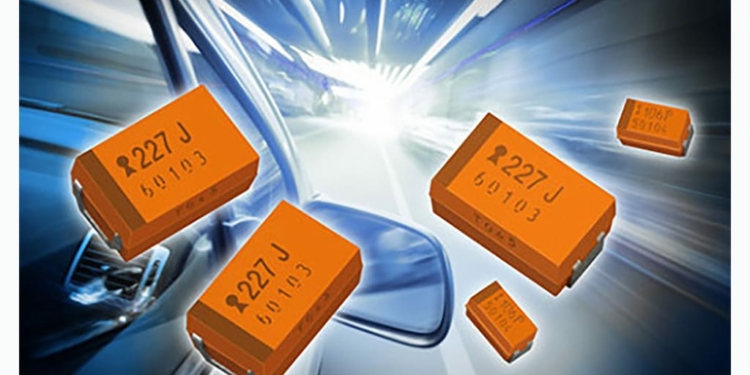Niobium oxide is a sister metal to tantalum, and shares many chemical characteristics with it, in addition to a few advantages of its own when used as a capacitor dielectric.
NATURAL ADVANTAGES NIOBIUM OXIDE HAS OVER TANTALUM AS A CAPACITOR DIELECTRIC
Niobium capacitor technology has existed for decades, but its inherent direct current leakage instability and the lack of high purity niobium metal powders combined to arrest the development of this class of capacitors until recently.
Now the development of special doping techniques to improve the DCL performance of niobium oxide capacitors and the scaling up of niobium powder production have resulted in viable commercial production, and manufacturers such as AVX, Vishay or Holy Stone produce several series of surface mount niobium capacitors for commercial, industrial and automotive applications.
ADVANTAGES OF NIOBIUM OXIDE CAPACITORS
Its thin dielectric oxide layer and high dielectric strength combine to produce high volumetric capacitance ratings in similar ratio with tantalum capacitors. It is this affinity with long-established tantalum technology, plus the advantages outlined below, that make niobium oxide devices a growing sector of today’s capacitor marketplace.
- Abundance: an important advantage of niobium is the abundance of niobium ore in nature relative to tantalum ore; this relative abundance equates to lower cost and better availability within the capacitor marketplace.
- Flame Retardant: niobium oxide has a far higher ignition energy than tantalum which results in a significant reduction (up to 95%) of the ignition failure mode of niobium oxide capacitors when compared to conventional tantalum devices.
- Self-arresting mechanism: In addition to the self-healing known on conventional tantalum MnO2 capacitors, the NbO capacitors are featuring one more feature when it is exposed to local breakdown, the NbO dielectric will transform into a NbO2 semiconductor as a “second” insulation protecting the part to go to short circuit mode. Such part then continue normal operation.
- High Reliability: the natural high reliability performance of niobium oxide capacitors makes them suitable for high performance industrial and automotive applications such as airbag controls, in-cabin entertainment systems, and seat position modules
- Light Weight: Niobium oxide powder is half the density of tantalum powder which makes niobium capacitors a practical choice for portable and wearable electronic devices
- Deating rule: 20% derating is sufficient compare to 50% typical derating recommended for conventional tantalum MnO2 capacitors in power, high surge applications.
- Niobium oxide capacitors are produced using the same moulded case styles and industry standard footprints as conventional surface mount tantalum capacitors, in capacitance ratings up to 1,000µF and voltage ratings from 1.8Vdc to 10Vdc
LIMITATIONS
- The main limitation is the maximum rated voltage – 10V, with recommended derating 20% it means the technology is suitable for operating voltages up to 8V maximum.
- ESR is in line with conventional tantalum MnO2 capacitors that is higher compare to tantalum polymer types offering lower ESR capability
- Product range does not offer low profile, high CV variants.
- Maximum 125C parts with higher temperature derating above 85C.
Conclusion
Niobium Oxide capacitors are viable alternative to circuits with operating voltages up to 8V. If you do not need highest energy density in extreme low profile, the NbO capacitors may bring you the benefit in reliable and safe long term operation.
Refer further to tantalum capacitors knowledge base article: https://passive-components.eu/tantalums-capacitors/































